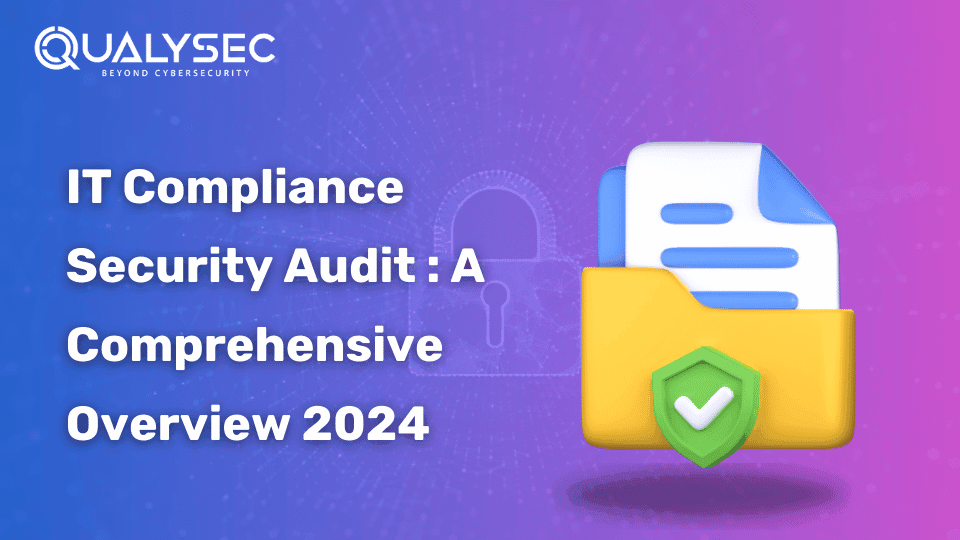IT Security Compliance – A Quick Guide
You don’t need another lecture about why cybersecurity matters. You already know the stakes: fines, customer distrust, broken contracts, public blow-ups. What you might still be figuring out is how to prove your systems are secure without drowning in a sea of frameworks, checklists, and shifting regulations. That’s what IT security compliance really comes down to proving. You are protecting what matters, in a way regulators and clients can verify. This guide lays it all out clearly: which standards apply to your business, where most teams trip up, and how to stay secure and audit-ready without chasing your tail. Whether you are prepping for SOC 2, sorting out HIPAA, or trying to keep your startup fundable, this is the field manual you need. What is IT Security Compliance? IT security compliance, also known as information security compliance, refers to a set of pre-set regulations, laws, or standards established to protect IT assets. What is the importance of IT Security Compliance? If you’re building a product, working with sensitive data, or selling into regulated industries, compliance shows up whether you planned for it or not. It’s baked into security reviews, procurement forms, vendor questionnaires, and customer contracts. You don’t need a compliance badge to look good on a landing page; you need it to stay in the game. Here’s why companies start treating compliance as a priority: And the risks of skipping it? Deals stall, fines show up, and teams scramble to fix gaps after the damage is done. But the smart companies? They treat compliance like a product feature, something you build with purpose, maintain properly, and use to win business. It’s the difference between being reactive and being ready. Schedule a Free IT Compliance Consultation Today. Examples of IT Security Compliance Compliance frameworks don’t fit all industries the same way. There are various standards established and maintained. Here is a list of compliance standards: Framework Who It’s For What It Covers SOC 2 SaaS / B2B / Tech Controls around security, availability, confidentiality ISO 27001 Enterprises / Global organizations Information Security Management System (ISMS) HIPAA Healthcare / Healthtech Patient data privacy, risk management, breach handling PCI DSS Fintech / E-commerce Payment data, transaction security GDPR Companies with EU customers Data subject rights, data handling transparency So, how do you choose? It is important to understand what standards you need to adhere to in order to maintain compliance. Common Compliance Mistakes (and How to Avoid Them) Most companies don’t fail compliance because they’re reckless. They fail because they assume they’re fine until someone asks for proof. Here’s where it usually breaks down: Explore our recent guide on Compliance Security Audit. Steps to Achieve & Maintain IT Security Compliance Here is a step-by-step process to achieve and maintain compliance: Latest Penetration Testing Report Download Best Tools & Services to Stay Compliant Let’s clear something up: tools won’t make you compliant. But they will save time, reduce manual work, and keep your team from burning out on spreadsheets. Here’s a breakdown of tools that actually move the needle, organized by what they help you do: Governance, Automation & Tracking – Drata, Vanta, Secureframe: These help you track controls, map them to frameworks, and stay aligned between audits. Great for startups scaling fast. Vulnerability Management & Scanning – Nessus, Rapid7, Qualys: These tools assess the environment for weak spots, misconfigurations, outdated libraries, and exposed services. You need to think of these tools as your early warning sign spotters. That will help you figure out the solutions. Security Monitoring / SIEM – Splunk, SentinelOne, Sumo Logic: These handle real-time monitoring, alerting, and log analysis. Useful for post-incident investigations and long-term visibility. Documentation & Knowledge Management – Confluence, Notion, Hyperproof: Keeps your policies, incident logs, and meeting records in one place. If it’s written down and versioned, it’s one less thing for auditors to flag. Note: For penetration testing & manual validation, opt for the leading cybersecurity agency, Qualysec. To know more, talk to our experts today! Qualysec’s Role in Your Compliance Journey Most vendors either drown you in tool dashboards or drop off a 40-page report and disappear. QualySec takes a different route: hands-on, tailored, and built around getting you audit-ready without the guessing game. Here’s what sets us apart: Hybrid testing that actually means something: It’s not just scans. QualySec blends automated testing with deep manual assessments, so your compliance isn’t based on checkbox results. Real-world attackers don’t follow a script, nor do we. Frameworks that speak your auditor’s language: SOC 2. HIPAA. ISO 27001. PCI-DSS. GDPR. You name it, our experts have worked through it. Whether you’re starting from zero or remediating gaps from a failed audit, the team maps controls to standards and provides documentation that holds up under scrutiny. Reports that don’t read like bedtime stories: You’ll get findings, severity ratings, proof-of-concept screenshots, and remediation steps laid out clearly. This is the kind of reporting auditors respect and engineering teams can actually work with. Want to learn more? Have a chat with us now! Talk to our Cybersecurity Expert to discuss your specific needs and how we can help your business. Schedule a Call FAQs Q: What is the difference between IT compliance and cybersecurity? A: IT Compliance is the ability to prove you are secure. Cybersecurity is the work that keeps you that way. You need both to be compliant and secure. Q: How often should compliance be reviewed? A: Annually at a minimum. But in fast-moving teams, quarterly reviews are smarter. New hires, tool changes, feature launches, all of it affects your security posture. Q: What happens if a company fails to comply? A: If a company fails to comply, you can expect delays, fines, and lost contracts. But it’s fixable, and this is where Qualysec steps in to help you. Q: Does being compliant mean we are 100% secure? A: No, though security and compliance are interconnected, being compliant doesn’t mean you are 100% secure.





